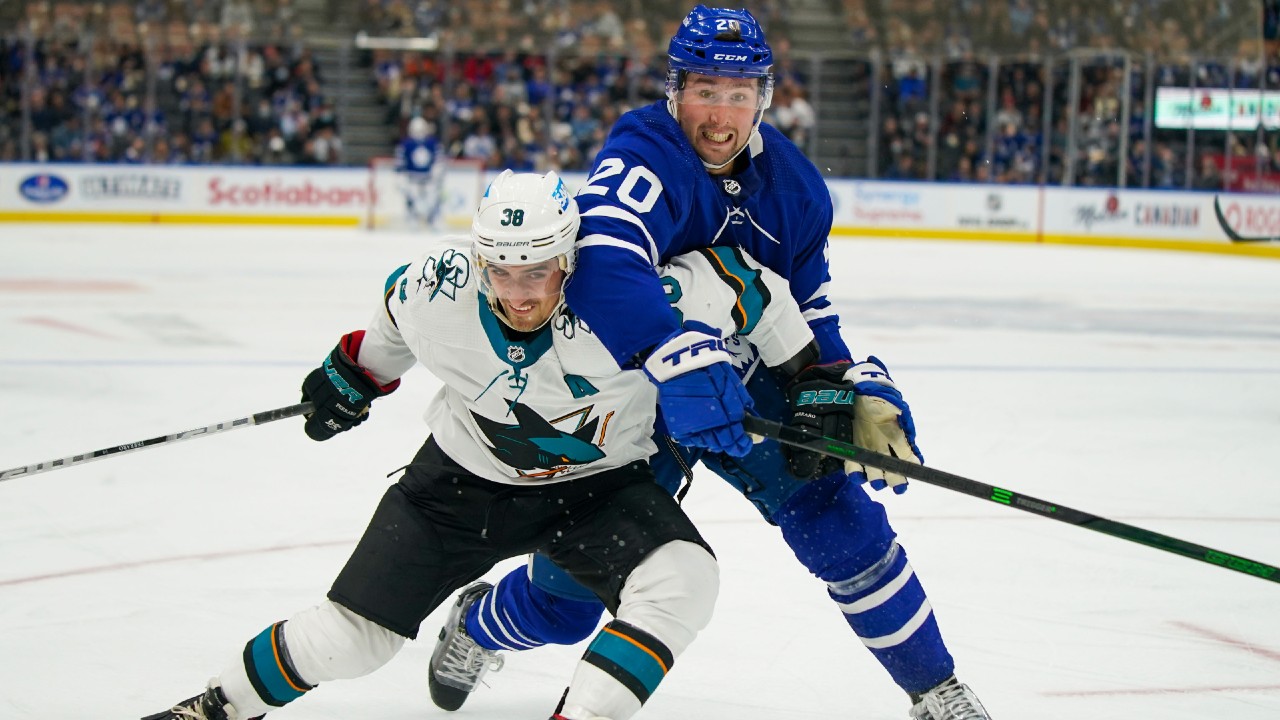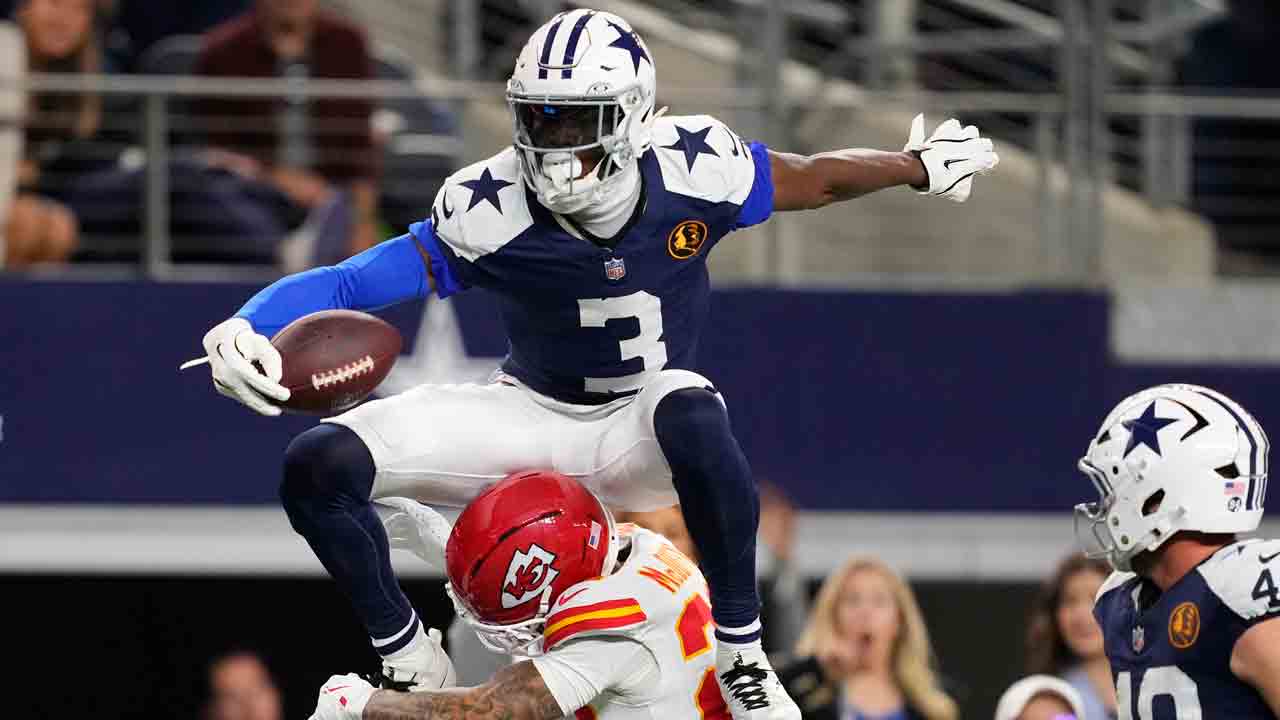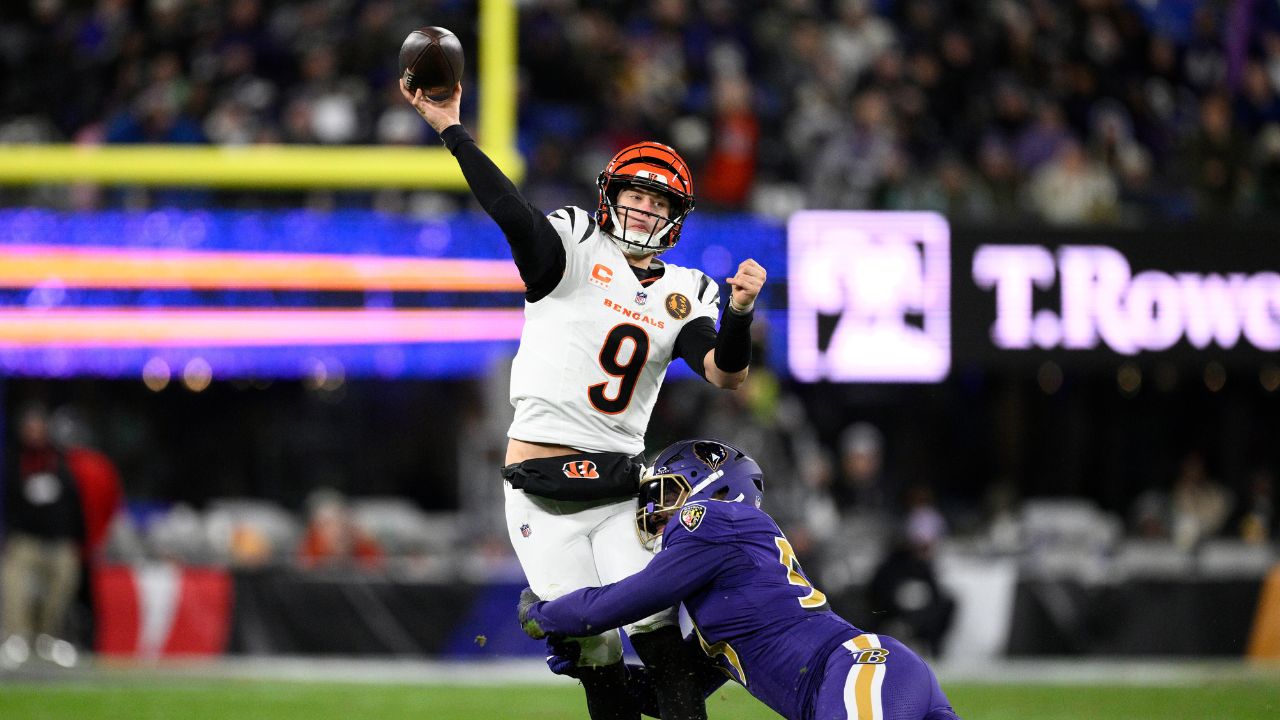
We all make mistakes.
It’s how we deal with them that can define us.
In his annual summertime spree through the NHL’s bargain aisle, Kyle Dubas plucked four forwards with varying attributes he believed could complement his core. Michael Bunting and his greasy goals. David Kämpf and his defensive prowess. Ondrej Kase and his kamikaze-ness. And Nick Ritchie with his physicality and (fingers crossed) offensive upside.
Three out of four ain’t bad.
So, when Ritchie failed to seize his opportunity — producing two goals in 33 games featured mostly in the Toronto Maple Leafs’ top six and on the second unit of hockey’s most lethal power-play — Dubas realized he’d made an error.
Worse: the general manager’s misfire was signed through 2022-23, when Ritchie’s overpriced cap hit ($2.5 million) would be anchored by an even more cumbersome salary ($3.3 million).
Dubas tried giving away Ritchie’s contract, waiving him on Jan. 6.
No takers.
He’d either need a sweetener or salary retention.
That Dubas attached a conditional draft pick — a choice of either Toronto’s 2023 third-rounder or its 2025 second-rounder — to send Ritchie to the Arizona Coyotes late Saturday was unsurprising.
That Dubas received two useful pieces with a combined cap hit ($2.45 million) lower than Ritchie’s, plus cleared all of Ritchie’s money off the books for next season, is a heist.
Seldom does a hockey trade go down as an outright victory, but with the Maple Leafs locked in win-now mode, this is a fantastic bit of business by an executive who faces great obstacles in chasing the deadline’s marquee bait (Jakob Chychrun, John Klingberg, Claude Giroux, Ben Chiarot, et al.)
Let’s look at all the advantages for the Leafs in this deal.
• First on our list is Ilya Lyubushkin, hardly a household name but a desirable second-tier rental target that fits the club’s needs. (We listed Lyubushkin last month when surveying the pending UFAs the Leafs should explore.)
The 27-year-old is a boring, stay-at-home right shot having a solid campaign in relative obscurity. The 6-foot-2 Russian carries a modest $1.35-million cap hit. He kills penalties and throws hits. He skates more than 18 minutes nightly and starts the vast majority (61 per cent) of his shifts in the D-zone yet drives play forward. He was a minus-6 on a tanking team with a minus-74(!) goal differential.
Surely his metrics enticed Dubas. When Lyubushkin is on the ice at 5-on-5, the opposition averages 2.16 expected goals per 60. That’s stingier than every Leafs defenceman not named Timothy Liljegren.
“Boosh is a heart-and-soul player who played hard and laid it on the line for us,” Coyotes coach André Tourigny told Craig Morgan of PHNX Sports. “He doesn’t have a bad day. He showed up every day to work. He’s a great guy and I think Leafs nation will like his work ethic and his commitment to his team.”
Lyubushkin has a career-high nine assists this season but has only scored once in 180 NHL appearances and has never touched the playoffs.
With coach Sheldon Keefe already experimenting with a split of Jake Muzzin and Justin Holl, we can see Lyubushkin getting some run with both Muzzin and Sandin down the stretch to find the best fit.
Having watched him here in Arizona,Leafs got a solid d-man. He’s responsible defensively and does have an offensive side which was underused because his partner was Chychrun. And you can’t have both pinch. I think he’ll come back to AZ,he’s a UFA.
— JT in the AZ (@thegr8juan_2) February 20, 2022
• Ryan Dzingel has been a forward in sharp decline for the past three seasons. He does, however, have two more 20-goal seasons on his résumé than Ritchie.
Dzingel is a left shot with centre experience, and Toronto had been looking to add depth in his position after losing Kirill Semyonov, Michael Amadio and Adam Brooks (twice) this season.
On an expiring deal and on his sixth team in four seasons, Dzingel should arrive hungry and inspired (think: Alex Galchenyuk), but Toronto should temper expectations.
We view Dzingel as injury insurance for the middle six’s left side, and he should have to battle his way into the lineup.
• The cap space Dubas saves will likely be more valuable than Dzingel.
Freeing up Ritchie’s $2.5 million in 2022-23 gives Dubas some fluidity to manoeuvre around Morgan Rielly’s well-deserved pay raise.
Re-signing Jack Campbell will be top priority, but the GM will also have to bump the paycheques of pending RFAs Sandin and Liljegren and consider keeping Pierre Engvall, Ilya Mikheyev and Kase — useful forwards who may be pricing themselves out of town.
Every million counts.
• That Dubas is kicking the costly portion of the trade way down the road is key.
A trade for 2025 second-rounder — kids currently aged 14 or 15 — is four entry drafts into the future.
“This is the furthest into the future draft pick traded that we’ve seen since CapFriendly’s inception in 2015,” tweeted the website.
Who knows who’ll be running the Leafs by then?
Arizona is likely the only team that would accept a payment so deferred.
The rebuilding Coyotes have a ridiculous eight picks in the first two rounds of 2022 and three second-round picks in 2024.
From GM Bill Armstrong’s perspective, he’ll be working with a near blank slate in 2022-23. He needs to collect some actual hockey players to reach the cap floor and, you know, play the games.
Ritchie gets a chance to stick in the show, and the Coyotes get assets for two players they weren’t ready to extend.
“We are excited to have Nick join our roster,” Armstrong said. “He is a big, tough, strong winger who will add depth and physicality to our forward group.”
No, Armstrong didn’t lose the deal.
But unless that 14-year-old grows up to become the next Connor Bedard, Dubas was a massive winner.





